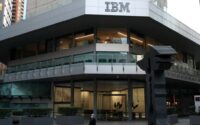The big story on the market downturn: The wealth bubble is popping
While recent crashes in British bond prices, real estate in China, and stocks in the U.S. were driven by different catalysts, they all reflect a common cause largely ignored: the popping of a worldwide wealth bubble.
The implications are huge for economies, fiscal and monetary policy, investors and savers everywhere. Even if the Federal Reserve succeeds in deflating the rate of growth in consumer prices in the U.S., it needs to be careful about how much it re-inflates this huge wealth bubble when it starts lowering interest rates.
Before 1990 in the U.S., asset price inflation and income followed similar trajectories. The aggregate value of all households’ net assets, including homes and retirement accounts, grew in line with economic output. That connection was long ago broken through a combination of loose fiscal and monetary policy and a worldwide glut of savings.
In the 1947 to 1990 period, the net worth of all households and nonprofit institutions on average equaled about four times the annual economic output; at the end of 2021, the ratio equaled about six and a half times an output of $23 trillion. By the end of 2021, the excess growth in asset prices by itself had added more than $50 trillion to the measured net worth of households.
Put another way, every $100,000 you might have had in home equity and retirement saving on Dec. 31, 2021, would have been worth only about $60,000 without this excess asset price inflation. The drop in stock values during 2022 has taken away only a small fraction of that $40,000 gain.
Looking to restore this 1990-to-2021 world might stimulate the economy in the short run, but the long-term consequences can no longer be ignored, as recent British and Chinese examples warn us.
One is rising wealth inequality. We’ve already seen how the Fed’s re-inflation of asset prices during the Great Recession, however necessary, led to greater wealth inequality than existed before then.
But it’s not just rich versus poor; it’s old versus young. Today, many like myself who bought a home decades ago have seen gains that made our cost of housing almost free. Not so for our children and grandchildren buying at today’s inflated prices. In many ways, the young should want the bubble to burst so that they can buy homes and retirement assets at lower prices.
The wealth bubble also adds significant structural risks to the overall economy.
Years of low nominal interest rates gave investors extraordinary incentives to get some of the “free money” created by negative costs of borrowing once adjusted for taxes, inflation and bankruptcy protections. Despite rising nominal interest rates, today’s real borrowing costs continue to be negative just by subtracting out inflation. Buying unproductive assets becomes profitable when negative asset returns are less than negative borrowing costs. The large tax shelter market in the 1970s and early 1980s provides one example of what happens when borrowing costs become negative. Only when Paul Volcker got nominal interest rates above 20 percent did the real cost of borrowing become positive and stagflation come to a halt.
Now, add to those incentives for unproductive investment the extra protection provided even to bad investments by the $50 trillion of excess bubbling of wealth valuations in the modern period. Very low or negative borrowing costs to buy assets that rise in value independently of their productivity make a great deal for even the dumbest leveraged buyer but not for the economy.
Who are the possible losers? Today’s taxpayers, for one, who must pay the higher cost of servicing our very large government debt once real interest rates rise.
Savers, for another, who already have limited ways to diversify to protect their portfolios from decline.
Higher valuations also gave states excuses to reduce contributions to pension plans when pension actuaries, looking at the past as a harbinger of the future, predict future returns to be much higher than what pensions earn at today’s negative real interest rates and low stock earnings-to-price ratios.
Many retirees make the same mistake in predicting how far returns on their savings will support them.
Commercial bank lending, in turn, relies too much on bubble valuations to assess the riskiness of highly leveraged investments in real estate and leveraged buyouts. And, of course, the more inflated the bubble, the greater the potential asset price correction that can spur bankruptcy and depress demand more generally.
The fear of this descent in asset prices was one reason the Fed was so slow in converting from making net asset purchases to making net asset sales and voting to raise interest rates. But that delay only added to today’s consumer price inflation.
On the flip side, if the Fed doesn’t allow real (after-tax, after-inflation) interest rates to move out of the negative and near-negative territory, then it maintains all the incentives for the bubble to inflate further.
Getting out of this bind won’t be easy. Allowing these distortions to continue threatens economic stagnation, greater wealth inequality, and Congressional inattention to the costs of growing government debt. One way or the other, the Fed and investors will have to reduce their dependence on excess asset price inflation for years and, likely, decades to come.
Eugene Steuerle is a fellow at the Urban-Brookings Tax Policy Center.
[ad_2]
Source link


